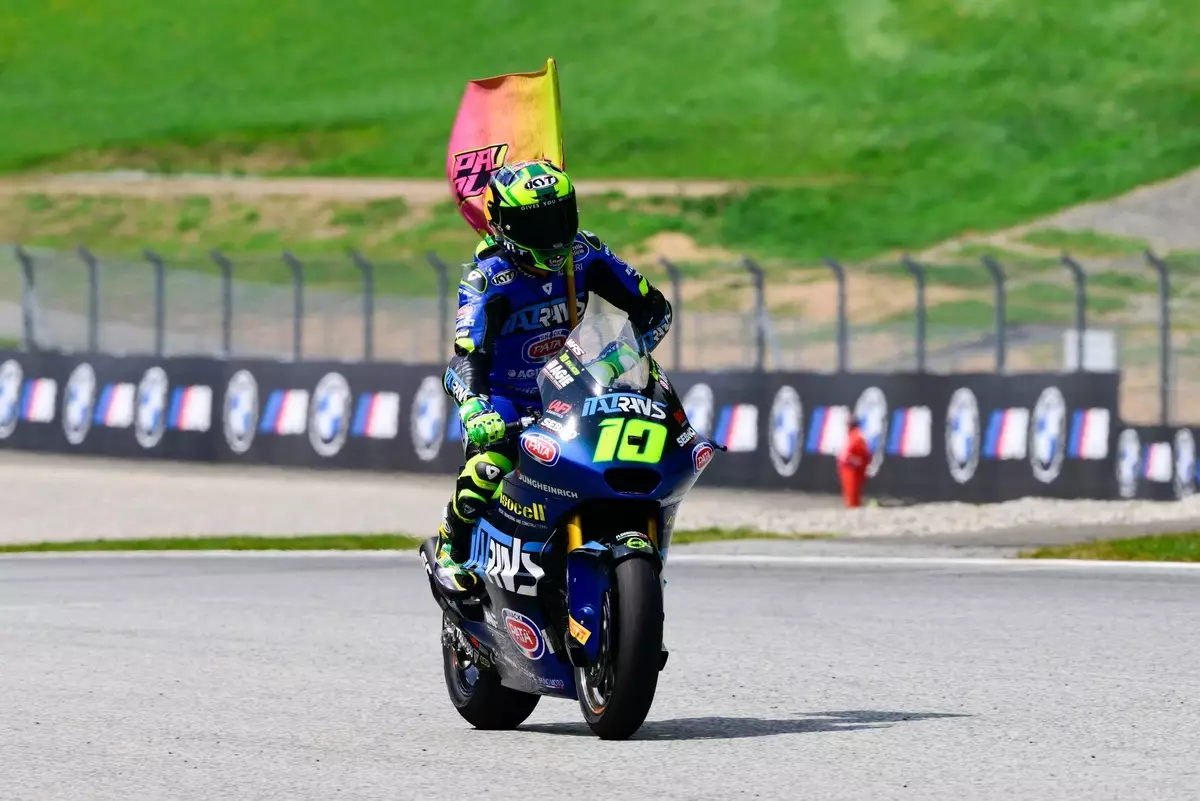The motorsport world is on the brink of an exhilarating new chapter as Diogo Moreira prepares to ascend from Moto2 to the elite ranks of MotoGP. At just 21 years old, the Brazilian rider is on the cusp of a transformative career move that could redefine his trajectory and elevate his nation’s presence in the sport. While many are quick to attribute this transition to seemingly straightforward factors such as nationality or timing, a deeper analysis reveals a carefully crafted strategy rooted in performance, potential, and global market considerations.
Less than a year ago, this talented rider was a relatively unknown entity outside dedicated racing circles. Today, he’s positioned as a serious contender in Moto2, with dominant performances evident in races like the Austrian GP where he showcased both grit and talent. The impending deal with Honda’s LCR team not only signifies recognition of his riding ability but also underscores Honda’s keen eye for young talent with long-term potential. This isn’t merely about filling a seat; it’s about investing in a rider with the capacity to adapt, evolve, and lead the future of Honda’s racing ambitions.
Deciphering the Strategic Significance of the Move
While some may dismiss Moreira’s signing as a token gesture—comparing it to past underwhelming Brazilian ventures in MotoGP—the truth is far more nuanced. Honda’s choice to prioritize a developing rider with a long-term plan indicates a forward-thinking approach. By investing in Moreira now, Honda aims to be at the forefront of the upcoming 850cc era, which promises a new generation of motorcycles with different handling dynamics. The move is not only timely but strategically sound, as integrating talent early allows a rider to mature alongside the evolving technical landscape.
Furthermore, Moreira’s rise comes with cultural and market implications. Brazil has a rich racing heritage, but its representation in the modern MotoGP era has been sparse, with legendary figures like Alex Barros being notable exceptions. Honda’s prospects of revitalizing this connection—especially with the 2026 return of MotoGP to Brazil—adds a meaningful dimension to their investment. Moreira’s entry could serve as a catalyst for expanding the sport’s popularity in South America, opening new markets and fanbases eager to embrace a homegrown hero.
Beyond the Race: National Identity and Market Dynamics
It’s tempting to interpret Moreira’s move through a narrow lens of national pride. However, the rider himself dismisses such notions, emphasizing that his success hinges on his performance and dedication. This attitude highlights an understanding that the sport is ultimately driven by skill and precision, not just the flag he carries. Nevertheless, the strategic significance of his nationality should not be understated.
Having a Brazilian rider in the premier class aligns with Honda’s broader marketing strategies, aiming to resonate with a wider global audience. The inclusion of Latin American talent can amplify Honda’s brand visibility across diverse markets, especially as manufacturers increasingly see racing success as a gateway to broader economic engagement. The move also marks a cultural awakening within the sport—signaling that talent from every corner of the world has a place at the highest level, provided they demonstrate excellence.
Another notable aspect of this transition is how it influences the team dynamic. With Moreira stepping into the spotlight, Simultaneously, Somkiat Chantra’s departure reflects the competitive nature of team management and resource allocation. The dissolution of Idemitsu’s sponsorship marks the end of an era but also creates space for new branding and market partnerships, possibly reflecting Honda’s ambitions to forge stronger ties with diverse Asian and Latin American industries.
Impacts on the Broader MotoGP Landscape
Moreira’s entry is not an isolated event but a piece in a larger puzzle shaping the future of MotoGP. His move reopens discussions about the diversity of nationalities represented in the sport. The last South American rider in MotoGP—Alex Barros—left the scene over a decade ago, leaving a void that Moreira looks poised to fill. If he succeeds, he might ignite regional enthusiasm and inspire a new pipeline of talent from Latin America.
Moreover, this signing could influence contractual negotiations within the paddock. It appears Jack Miller is increasingly likely to extend his contract with Yamaha, whereas riders like Miguel Oliveira may find their futures in question, especially if performance clauses are triggered by injuries or results. The reshuffling hints at a shifting balance of power, where performance, adaptability, and marketability will become critical determinants.
In essence, Moreira’s promotion reflects a broader evolution in MotoGP—one where youth, international representation, and strategic foresight are transforming the sport into a more global, dynamic competition. His ascent will undoubtedly be watched closely, with hopes that his journey inspires a new era of Brazilian and Latin American excellence at the highest levels of motorcycle racing.


Leave a Reply